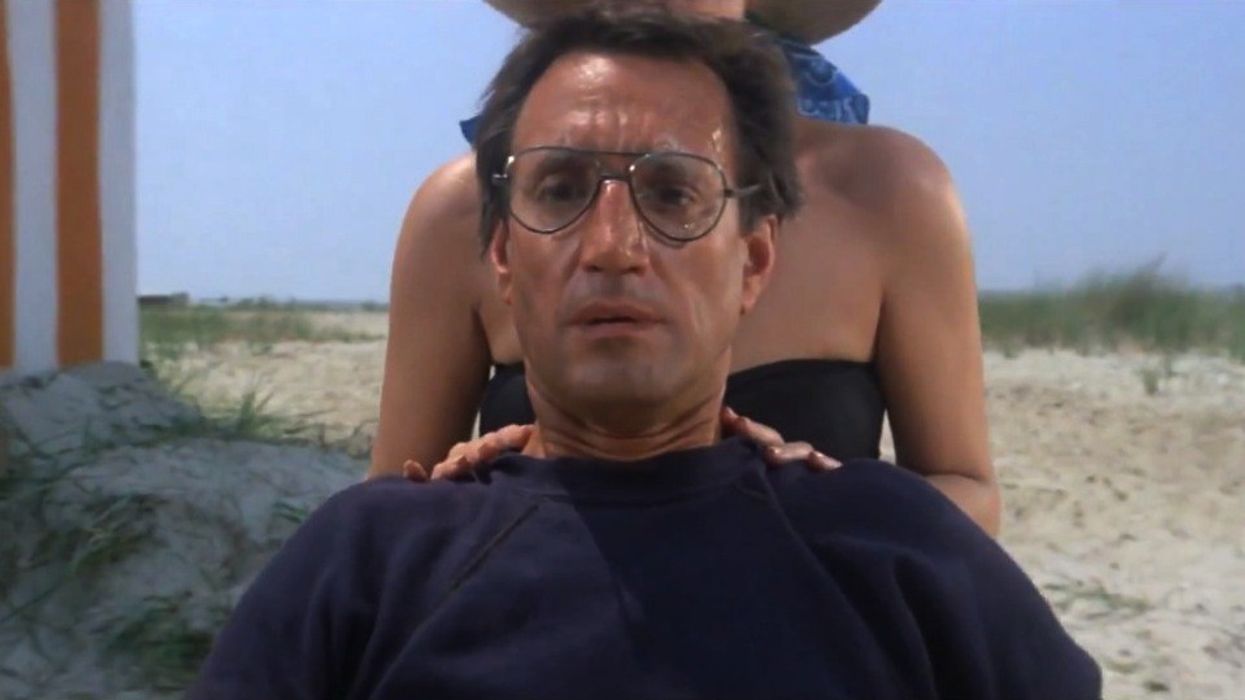What Moment From 'Jaws' Did Spielberg Borrow From Hitchcock?
Two of the greatest directors of all time in concert with one another.

I think if you want to be a great director, you need to watch a lot of movies. I'm sure there are other ways to do it, but this is the way I am trying. I can't imagine how hard that would be at a time before home video, when you had to just find movies playing.
Well, we know Steven Spielberg is a student of cinema. The guy consumes movies left and right. And while he was defining his style and his unique voice, he was also homaging the greats.
This is very evident early in Jaws.
Let's dive in.
Hitchcock in Jaws
Steven Spielberg and Alfred Hitchcock are auteurs with their own unique styles and energy. They also have history, with Spielberg trying to visit a Hitchcock set when he was sneaking onto lots.
When it came to Spielberg's second movie, Jaws, he made sure to homage the master.
The scene in question is when they're on the beach and Alex Kitner is swimming. In the scene, Chief Brody knows there's a shark out there, but no one believes him, and the ones who do believe him have decided to be willfully ignorant in order to keep the beaches open.
As Kitner is attacked, Brody comes to the realization that there is a shark, and his wildest fears are on display. He sees all the blood and the body and knows someone has died on his watch, someone he failed to protect.
That realization is all brought to us with a dolly zoom.
- YouTubewww.youtube.com
At the time, many people thought Spielberg invented this, but it was actually an homage to Alfred Hitchcock's Vertigo.
In that movie, Hitchcock uses the dolly zoom to convey that his character, portrayed by Jimmy Stewart, is afraid of heights. And it shows him getting vertigo as he climbs higher and higher.
- YouTubewww.youtube.com
While Spielberg has often cited Hitchcock as a significant influence on his filmmaking, particularly in the art of building suspense, this specific use of the dolly zoom stands as the most direct and recognizable visual homage.
It connects them across time, and it shows how pastiche and homage can help you find your own voice.
Beyond this specific shot, the broader Hitchcockian principle of "less is more" also heavily influenced Jaws. The infamous unreliability of the mechanical shark, affectionately nicknamed "Bruce," forced Spielberg to adopt a more suspenseful, Hitchcock-style approach.
And it changed his career, the movie is better for it, and that malfunction gave us one of the greatest movies of all time.
Summing It All Up
Ultimately, Spielberg's use of the dolly zoom is more than just a technical flourish; it's a reverent nod from one master of suspense to another. It paid homage to Hitchcock's innovative spirit. And it stands as a testament to how great artists can borrow from the past to create something entirely new, terrifying, and timeless.
Let me know what you think in the comments.











